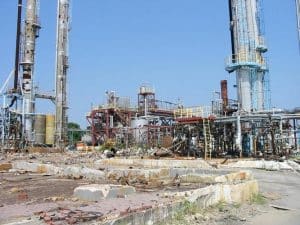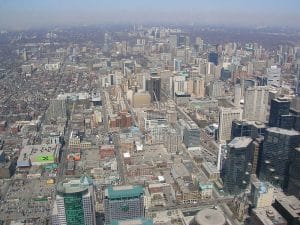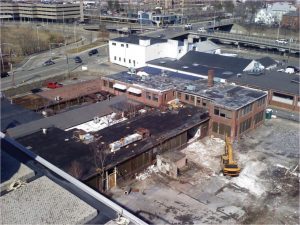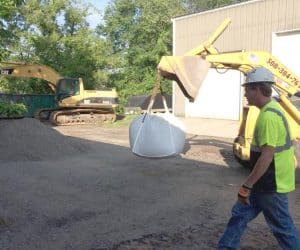New Urbanism and the Value of Site Cleanup
Site cleanup is well understood to be critical to the health of our planet. Since site contamination affects the quality of air, land, and water, it is clear that remediating contaminated sites is paramount to the environmental viability of the nation. However, site cleanup isn’t just about greening the nation; rather, site cleanup provides a myriad of environmental, health, and socioeconomic benefits, some of which may be surprising.

There are over 500,000 brownfields currently in the United States. A brownfield is defined as any land in the United States that is abandoned or underused because redevelopment of said site is complicated by environmental contamination. Brownfield sites are not to be confused with Superfund sites, of which there are over 1,300 in the United States. A Superfund site is a contaminated area of land that has been identified by the United States Environmental Protection Agency (EPA) as needing cleanup due to the risk it poses to environmental and/or human health. Superfund sites are placed on the National Priorities List (NPL) and are eligible for government funding through the Superfund program that was established as the Comprehensive Environmental Response, Compensation, and Liability Act of 1980 (CERCLA). Unlike Superfund sites, brownfields generally do not pose an immediate or serious risk to the environment or human health, as they typically have a lesser degree of contamination. Brownfields do, however, compromise the economic and social viability of our nation by preventing development, which causes numerous problems.

Because site cleanup can be expensive, brownfields are often left in states of ruin and decay. Brownfields disallow redevelopment, forcing communities to find new areas to develop, contributing to the degradation of inner cities and increased urban sprawl. Since we now understand that new urbanism — or the planning and development of compact cities that are walkable with accessible shopping and public spaces — promotes healthier cities and lifestyles, urban sprawl is also understood to be detrimental to the health of both cities and the environment. Cleaning up and redeveloping brownfields is one of the most effective ways to limit urban sprawl and to promote new urbanism, and fortunately, funding is available for brownfield remediation.
The EPA launched the Brownfields Program in 1995 to provide funding for brownfield remediation. The Brownfields Program includes the following grant programs:
- Brownfields Assessment Grants: funding for Brownfields inventories, planning, environmental assessments, and community outreach
- Brownfields Revolving Loan Fund Grants: funding to capitalize loans that are used to clean up brownfields
- Brownfields Cleanup Grants: funding to carry out cleanup activities at brownfield sites owned by the applicant
- Brownfields Area-Wide Planning Grants: funding to communities to research, plan, and develop implementation strategies for cleaning up and revitalizing a specific area affected by one or more brownfields sites
- Brownfields Job Training Grants: funding for environmental training for residents of Brownfields communities
In 2002, the Program was expanded when Congress passed the Small Business Liability Relief and Brownfields Revitalization Act, more commonly known as the Brownfields Law. Since the enactment of the Brownfields Law, the EPA has awarded over 1,000 grants totaling over $200 million to public and private sector organizations.

Cleaning up brownfields not only promotes new urbanism by reducing urban sprawl and inner city decay, but also increases surrounding property values, resulting in an increased tax base. These cleaned up sites allow for the utilization of existing infrastructure and transit and therefore contribute to the economic health of cities by eliminating the need for additional municipal infrastructure. Site cleanup also helps to eliminate urban arson, vandalism, and the threat of injury from dilapidated structures and areas. Since site cleanup also reduces the need to develop open land, brownfield remediation contributes to the protection of our natural resources and environment while beautifying urban landscapes. In some instances, brownfield remediation even allows for the preservation of historical landmarks and architecture that would otherwise require demolition.
And let’s not forget about health. Site cleanup eliminates the contamination that threatens our environment. Our water, air, and soil is protected from the initial contamination as well as future contamination. Even when contamination is initially minimal, deteriorating buildings and abandoned property have the potential to increase contamination as degrading building components leach into the soil and water.

One thing to keep in mind is there is some potential risk associated with brownfield remediation. If not managed or handled properly, contaminated soil could potentially result in further contamination by migrating to surrounding land through groundwater or even runoff into surface water. To significantly reduce these risks, it is recommended and often required to utilize an environmental professional when cleaning up brownfields. In Massachusetts, for example, it is required to have a Licensed Site Professional provide evaluation both before and after cleanup to ensure that all regulations, technologies, and construction best practices were strictly followed and that the contamination has been successfully remediated.
Site cleanup clearly has significant value when it comes to the health of our nation’s environment, economy, and citizens. More and more, communities are seeking to implement new urbanism and the gentrification of cities, forcing developers to seek ways to redevelop previously unusable land. With smart city planning, the availability of brownfield grants, and the utilization of environmental professionals, site cleanup will continue to provide significant value to the economic, environmental, and physical health of communities throughout the country for years to come.
